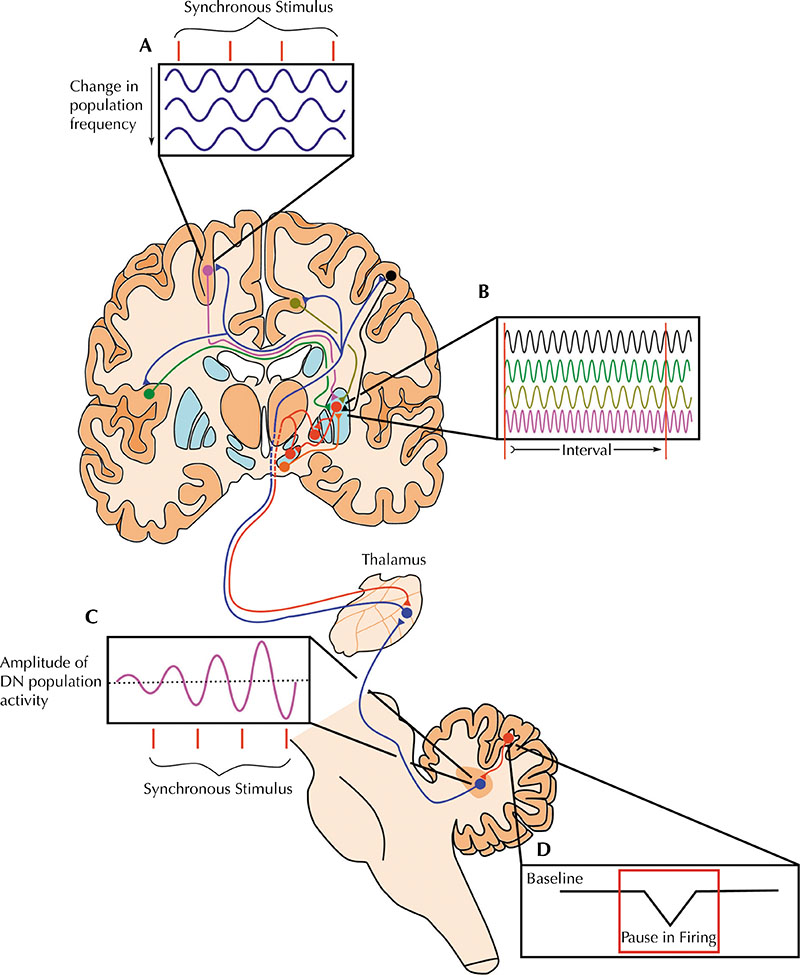Revue de neuropsychologie
MENUCognitive time and brain communications with aging Volume 14, issue 4, Volume 14, numéro 4, Octobre-Novembre-Décembre 2022
Figures
- Key words: aging, cognitive time, electroencephalography, brain rhythms
- DOI : 10.1684/nrp.2022.0730
- Page(s) : 257-61
- Published in: 2022
Whether time seems to accelerate or stretch on endlessly, perceiving and representing the passage of time enables us to organize our perceptions and thoughts into a common temporal structure for the coordination of actions, planning, and information processing. Although behavioral studies have identified changes in time discrimination and temporal structuring abilities with age, little is known about the differences between individuals and the neural bases involved. Recent work has demonstrated the link between synchronized brain activity, measured with electroencephalography (EEG), and the variability of cognitive changes during aging. Indeed, the synchronization of communications between brain regions appears to be a sensitive and specific indicator of the alteration of brain networks, occurring before the interruption of communications linked to pathology. This combination of cognitive and neuroimaging approaches aims at clarifying the role of cognitive time as a structuring element of individual cognitive functioning, as well as the changes in brain rhythms underlying time perception during aging.


